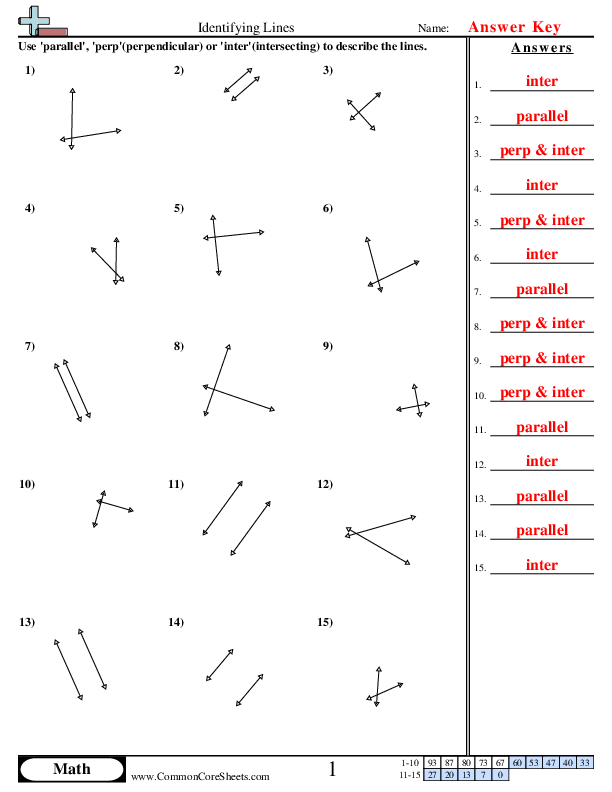Our free lines worksheets are perfect for reinforcing your students' understanding of parallel and perpendicular lines. These lines worksheets feature a variety of activities, including identifying and labeling lines, drawing lines to match given angles, and finding the slope of lines. With plenty of practice problems to choose from, our lines worksheets are the perfect resource for students of all ages. So why wait? Start strengthening your students' lines skills today with our free and comprehensive lines worksheets.
Browse Sheets By Problem Type
×

Perpendicular, Parallel & Intersecting
4g1


×
Description:
"This worksheet is designed to enhance children's mathematical skills in identifying lines. Consisting of 15 customizable problems, it can be easily converted into flashcards or utilized for distance learning. It provides a hands-on approach for students to explore and understand the basic geometric concept of lines, aiding in their cognitive development in the field of math."

×
Student Goals:
Enhancing Analytical SkillsBy successfully completing the worksheet, students are expected to have developed their analytical skills. They should be able to interpret and solve problems more rapidly and effectively as they identify lines in various exercises, demonstrating a solid understanding of concepts taught in math classes.Increased Accuracy in IdentificationOne of the main accomplishments of this worksheet is the ability to accurately identify straight, curved, and zigzag lines in various graphical situations which could be seen in architecture, engineering, and art. This precision is a stepping stone to higher-level math concepts.Grasping Mathematics FoundationMathematics is highly contextual and procedural. This worksheet should help students to secure these basic concepts, and reinforce the foundation of their math knowledge. Being able to identify lines, an essential aspect of geometry, is a critical skill that acts as a building block for future more complicated concepts.Applying Knowledge in Real World ContextAfter finishing the worksheet, pupils should have gained the ability to apply learned knowledge in real-world situations. Lines are not only mathematical concepts, but are also omnipresent in our everyday life. Understanding them theoretically means students should now be able to recognize and make use of this knowledge practically.Boosting Problem-Solving SkillsProblem-solving is a universal skill that is honed by practice. By working through various examples and exercises in the worksheet, students should be better at problem-solving, not only in mathematics but in varied academic and life situations. The mental flexibility gained will support them in independently overcoming obstacles.Enhancing focus and patienceCompleting the worksheet requires attention to detail and patience. This exercise should have allowed students to practice these skills further, leading to an improvement in levels of concentration and patience when tackling similar tasks, which can be applied across different areas of study and beyond academic setting.


